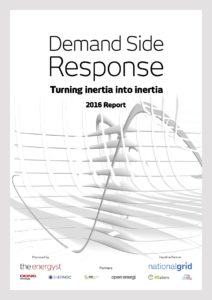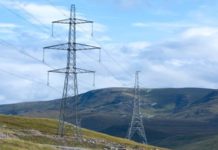 Most operations have some degree of power consumption flexibility, according to aggregators, yet relatively few organisations participate in balancing services, according to The Energyst’s latest end-user survey. So what’s stopping them? Aggregators, energy suppliers and end users from the public and private sectors weigh in.
Most operations have some degree of power consumption flexibility, according to aggregators, yet relatively few organisations participate in balancing services, according to The Energyst’s latest end-user survey. So what’s stopping them? Aggregators, energy suppliers and end users from the public and private sectors weigh in.
As with last year’s survey, concerns around disruption and that equipment and process are unsuitable remain key customer inhibitors. These are followed by a lack of understanding of an undeniably complex market. Revenue and ceding control to third parties appear lesser but notable barriers.
Those findings ring true both with aggregators and businesses that have had to sell DSR within their own organisations, according to interviews conducted for a new, free report.
Most firms have some flexibility
In terms of unsuitable equipment or processes, Sam Scuilli, regional director for international sales at Enernoc, says most I&C businesses have a degree of flexibility to harness.
“It is hard to generalise, but we find that most plants have some level of flexibility. It may not be at the level that they want or expect. But it may be a way of getting into the programme with equipment that was not part of their normal thought process – and then expand as it grows,” says Scuilli.
“When internal engineers actually dig into their equipment and processes with an eye to the specific programme rules, creative and innovative engineers can find ways to participate. Then it becomes a financial discussion, because [the finance people] trust their technical people.”
If the finances stack-up and the service provider can make the concept accessible to all decision makers, much of the battle is won, says Scuilli.
“While is not true that every business has suitable equipment, with an element of creativity and can-do attitude, most companies will find that they do.”
But before reaching that stage, aggregators have to break through the barrier of “’don’t touch my stuff’”, he admits.
Louis Burford, vice president, Restore UK, agrees.
“Not every I&C consumer in the UK has flexibility, but for the majority, it is a perceived risk.”
He says it is key to know about the customer’s specific processes before initial site visit. “That way you can have a very technical conversation – because it is the technical aspect they are concerned about.”
“Financially it makes sense, it is money for doing very little,” Burford continues. “So the FD is happy, the energy procurement guys are happy, but the operational teams have an initial nervousness that takes time to overcome.”
Burford thinks DSR suffers from a legacy perception of clunky mechanical processes. Today, automation technology means that productivity does not have to be impacted – and aggregators can unlock even small pockets of flexibility.
For example, says Burford, an asset that cannot be turned off or on more than 12 times a year can still be brought into FFR markets via aggregation, so that even a very small number of hours of flexibility throughout the year can be monetised.
Restore’s co-CEO and co-founder, Pieter-Jan Mermans, underlines the need to cross technical bridges first. Once that is achieved, he says that Restore has “never encountered major questions” around the financial business case.
Trust issue
Almost 90% of survey respondents that do not yet participate in DSR said they would do so if it did not interrupt their core business. That suggests Restore’s view around perceived disruption is correct. It also suggests that while National Grid and aggregators have stepped up customer engagement, there is still work to do in terms of market education.
Mermans says he has no issue with the current market framework and that the company “does not complain” about perceived barriers. He says his only request of National Grid is to keep making “mature statements to the generic press” that demand-response is a positive development, not a negative one.
“The more Cordi O’Hara and her team make these statements, the more we will create a broader understanding with plant directors, financial controllers, etc., which is required. Because they are part of the decision landscape,” says Mermans.
“Our message is not that ‘DSR will become a success if rule 1,2,3 are changed’. We believe that is not true and that the battle is elsewhere; we believe that the battle is in technology and in trust with consumers.”
Messaging, mixed messaging and complexity
Chris Kimmett, commercial manager at Open Energi, says market education programmes are beginning to bear fruit.
“There is momentum in the market compared to last year. People are starting to come to us rather than vice versa. Energy managers are moving away from the mantra of ‘use less and buy better’ to ‘use smarter’”
However, he says the core challenges remain the same.
“The education and information piece has definitely helped. But it’s still not people’s day job and it will never be their number one priority.
“It’s on the agenda of energy managers but it’s not on the agenda of the next level down – site managers or business process owners. The challenge is to get the message down from energy managers and also up to board level. Then you can drive change and scale up a lot quicker.”
Philippa Hardy, senior analyst with consultancy Delta-ee, agrees that it is a complex market to fathom for people getting on with core business. She thinks competing market actors can compound the issue.
“Complexity comes in different forms: Complexity over what demand response is and how it works; but also complexity around the different messages being given by different stakeholders,” says Hardy.
“It can be quite complicated and hard to compare different propositions from a customer perspective. Then you have the complexity around contracts – and this all leads back to time and hassle, which is a barrier in itself,” she says.
Transparency
Adam Baddeley, head of energy at Eunomia, agrees that “the opaque nature of the ancillary services market” can lead to reluctance to engage from end-users.
“We haven’t seen services being procured in any sort of way that is pricing transparent,” he says.
The consultancy is mulling whether to partner with an engineering firm to become in independent third party within DSR procurement. The idea is to assess customer’s flexibility and produce a specification that providers can bid for on a like-for-like basis. “I think something like that would unlock the market,” Baddeley suggests, but he admits there are question marks over margin.
Stop, collaborate, listen
Others are less convinced another middle layer is the way forward.
“I don’t think you need an independent party to come in between, more that the companies should work together,” says Alana Johnson, products and flexibility manager at Dong Energy.
“The different parties that can provide the different value streams should start working together. It is better to use the experts in their different fields,” she says. “I think that is where we will find the greatest value for the consumer without confusing them too much.”
Revenue certainty
Another customer barrier is around certainty of revenue, which also crosses into market barriers. It is hard for energy managers to make a compelling business without longer-term revenue assurances.
Dong, along with other aggregators and suppliers, sits on National Grid’s Power Responsive group. Johnson says simplifying the market and providing more certainty are high on the agenda – and that market makers recognise the need to act sooner rather than later.
“Power Responsive has created a lot of interest, Ofgem has put a lot of papers out into the market and [end users] are interested. They hear flexibility might be the next big thing to think about,” says Johnson.
But she adds that there is a risk that if the market is not sufficiently clear on how customers participate with different assets, “they will just step away again”.
“So if we don’t come together and make it clear how different customers participate in the different schemes – and maybe give a longer-term guarantee on payments – there is a danger of losing that very good level of interest and not capitalising on the value of the flexibility that, currently, is just sitting there.”
Should National Grid look longer term?
National Grid says it recognises the need for simplification and that short-term revenue streams can create difficulties for organisations contemplating DSR provision.
Speaking at the Power Responsive conference this summer, Cordi O’Hara, director, UK System Operator, said Grid “absolutely takes the point about simplification. We need to do better there.”
In terms of contract terms, National Grid received “lots of feedback around the duration of revenue streams” but O’Hara suggested that its hands were tied to a degree by its own incentive structure.
“The system operator has typically been incentivised over very short timescales with very prescriptive services so that they can compete to lowest cost and be held to account with the regulator. Do we need longer term revenue streams [and if so] how long do they need to be?” she said.
“We recognise businesses might need to change the kit in the factory – and must present that to a CFO and create a business case – and that a one year [contract] isn’t going to cut it. But where should the signal come from? Is it through longer-term incentives on the system operator, or is it changes to the capacity mechanism?”
O’Hara urged businesses to provide their views on that subject via the Power Responsive Platform. “That would [enable] a very different set of conversations with both regulator and government.”
Industrial view: Clearer signals, higher value
Mark Fitchett, head of electricity procurement at Ineos-owned chemicals firm Inovyn, said at National Grid’s Power Responsive conference that he is “all for demand side response, but sceptical about where we will end up”.
The firm participates in DSR in six of its eight European markets, but does very little in the UK. That’s because, along with Germany, “the UK is the markets where the value is lowest,” he says.
He also questions what ‘DSR’ actually means.
“If DSR is about making small embedded generators centrally dispatchable to National Grid – that is great. But it isn’t demand flexibility. And the economics of those two and the models that you need are very different,” says Fitchett.
“We run a big site and yet my manufacturing manager doesn’t like doing this, because it could be putting his job at risk and his job is to make chemicals. So you have to be going with a value proposition and a risk proposition and that is a difficult sell.
“We are a big user, we have been doing it for years and it is still a difficult sell. So if you are going down into smaller companies it gets harder.”
Fitchett believes that the market signals need to be simple and clear if DSR is to scale.
“If we can find an easy way of getting those signals and then we can operate on them. But you have got to keep it simple because even the most sophisticated users aren’t.”
Simplifying DSR in the public sector
Public sector procurement body the Crown Commercial Service manages £2.3bn annual spend on utilities and fuels. It currently has around 30MW of DSR via three aggregators – Ameresco, Flexitricity and Kiwi Power – although it will tender for a replacement framework agreement in January.
Much of its contracted DSR is via STOR using back-up generation, but frequency response and the capacity market appear to be growth avenues, according to portfolio development manager Julie Braidwood.
“We are looking to increase the DSR we have contracted as much as possible,” said Braidwood at National Grid’s Power Responsive conference. “There is a huge opportunity within the public sector estate.”
Amongst its diverse portfolio, the service has been working with National Grid to bring more hospitals into balancing services, identifying through workshops challenges, barriers and solutions to help NHS Trusts build business cases.
It is not a simple process, added Braidwood.
“The onsite energy manager thinks DSR looks interesting and could provide revenue. They have to speak to the estates team, who will look at the asset register. Then they have to get in touch with the finance guys to ask whether they can go ahead; there might be some invoicing arrangements, there might be funding required. Then they have to consult with the clinicians, who are acutely concerned about any break in supply. So it is critical for them to make sure there is a rigid safety process in place before they go ahead
“Lastly, somebody from procurement will need to get involved to choose the supplier that is offering the best value. As you can imagine in the public sector, that involves a fair amount of paperwork.”
That means “six months at best” before getting the to business case stage, says Braidwood. “And that is before you have even started talking to the DNO (distribution network operator). So the timescales are long and there is a lot of complexity.”
In response, Crown Commercial Service is putting together a ‘how to’ guide and business case template for the NHS.
“If there are 400 hospitals, there are going to be 400 business cases to write,” said Braidwood. “Rather than reinventing the wheel, lets just have one version of that and ensure they can be confident of accessing the right services.”
An extended version of this article is published in a new, free report on demand-side response. 
The report, sponsored by National Grid, Dong Energy, Enernoc, Kiwi Power, Open Energi, Restore and SmartestEnergy, is available as a free download at: theenergyst.com/dsr
Related stories:
Fear of disruption hobbling demand response uptake
More than half of I&C firms mulling energy storage investment
Grid buys 201MW of enhanced frequency response
Battery storage: positive outlook?
Demand-side response: Give us your views
National Grid must provide a plan for battery market, says SmartestEnergy
Can National Grid hit its 2020 DSR target?
Limejump boss: Big six will have to acquire aggregators or lose relevence
National Grid buys 3.6GW of back-up power to cover winter
Three policy tweaks that could enable 10GW of battery storage
Decc, Ofgem and National Grid must make battery storage stack-up
Ofgem: Energy flexibility will become more valuable than energy efficiency
National Grid boss: future of energy is demand not supply
National Grid says impact of solar requires greater system flexibility
National Grid signs 20MW demand-side response contract with battery storage operator
National Grid says UK will miss 2020 targets, predicts big battery future
Major changes to capacity market proposed
Hot technology: energy storage via heat battery
Western Power Distribution ramps up demand-response trials, calls for participants
Smart grids ‘require local control and businesses must play or pay’
National Grid must simplify demand response to scale UK market
Energy Technologies Institute: Let private firms run smartgrid trials
Flexitricity blasts transitional capacity market as Npower plots supermarket sweep
Follow us at @EnergystMedia. For regular bulletins, sign up for the free newsletter.




Just read this piece while doing some research on DR in global markets. Love the Vanilla Ice pull. Impressive.